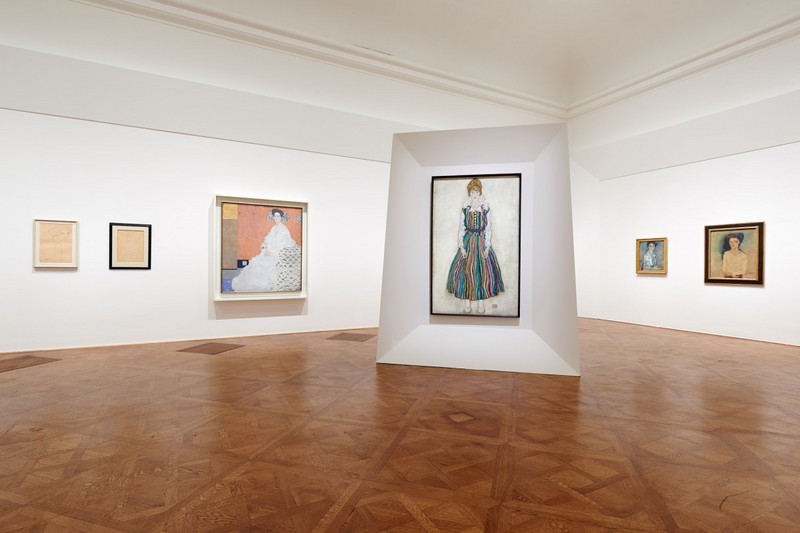The Women of Klimt, Schiele and Kokoschka
22 Oct 2015 - 28 Feb 2016

Exhibition view "The Women of Klimt, Schiele and Kokoschka"
Photo: Eva Würdinger, © Belvedere, Vienna
Photo: Eva Würdinger, © Belvedere, Vienna
THE WOMEN OF KLIMT, SCHIELE AND KOKOSCHKA
22 October 2015 - 28 February 2016
In the early twentieth century, the traditional relationship between the sexes was challenged by a number of social, economic, and philosophical changes. It was above all the incipient development towards gender equity that provoked vehement counter-arguments.
On the other hand, sexual liberation can be seen as a common goal of men and women, since they both sought to escape the restrictive moral taboos of the nineteenth century. Gustav Klimt, Egon Schiele, and Oskar Kokoschka – then the three most outstanding painters of Viennese modernism – approached the subject matter generally referred to as the ‘woman question’ from slightly different, albeit overlapping perspectives. The exhibition will present an in-depth exploration of these differences and similarities. Providing insights into the relationship between the sexes in the early twentieth centuries, the show will elaborate on the origins of a modern sexual identity.
22 October 2015 - 28 February 2016
In the early twentieth century, the traditional relationship between the sexes was challenged by a number of social, economic, and philosophical changes. It was above all the incipient development towards gender equity that provoked vehement counter-arguments.
On the other hand, sexual liberation can be seen as a common goal of men and women, since they both sought to escape the restrictive moral taboos of the nineteenth century. Gustav Klimt, Egon Schiele, and Oskar Kokoschka – then the three most outstanding painters of Viennese modernism – approached the subject matter generally referred to as the ‘woman question’ from slightly different, albeit overlapping perspectives. The exhibition will present an in-depth exploration of these differences and similarities. Providing insights into the relationship between the sexes in the early twentieth centuries, the show will elaborate on the origins of a modern sexual identity.
